Highlights
- Today, family-friendly apartments with 2+ bedrooms have declined from over 50% of apartments to under 40%. Post This
- It’s no coincidence that the explosion in tiny apartments has occurred alongside fertility decline: couples in cramped apartments really do have fewer babies. Post This
- The high cost of single-family housing is keeping young people in small apartments. Post This
More Americans are spending significant parts of their lives in apartments. In principle, there’s no reason a family couldn’t have one, two, or even three kids in an apartment—these are the numbers of children most Americans desire. But in practice, most Americans also want more space to raise their ideal family. Usually, the demand for space means a single-family home, as we’ve shown in extensive prior research. Most Americans prefer a single-family home for raising children. But family-friendly homes are becoming increasingly unaffordable.
So Americans have no choice but to consider launching their family from an apartment, as we showed in a our recent brief.
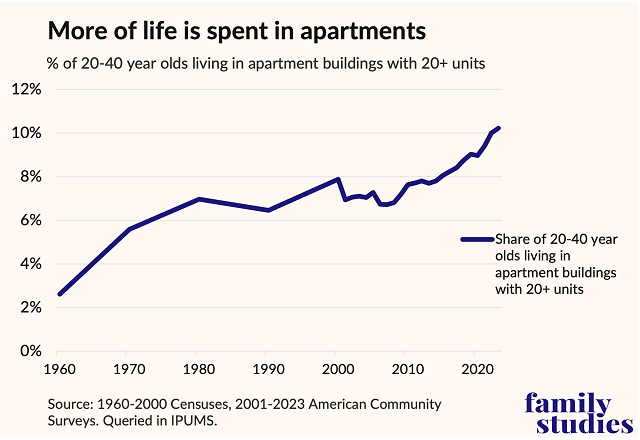
This isn’t just because families are choosing to live in apartments. Apartments have seen explosive growth as a share of new housing in America: real estate investors are less willing to put money behind single-family neighborhoods today.

Even as apartments get more and more common, the typical apartment is changing: it’s getting smaller.
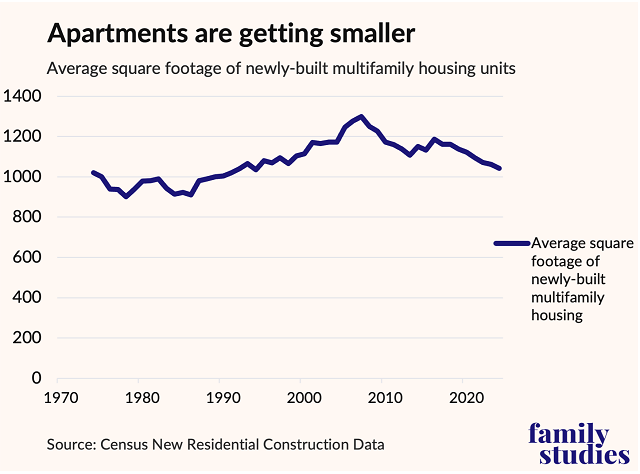
It's not surprising, then, that as apartment square footage has declined from about 1300 square feet to just over 1,000, bedroom counts have fallen, too.
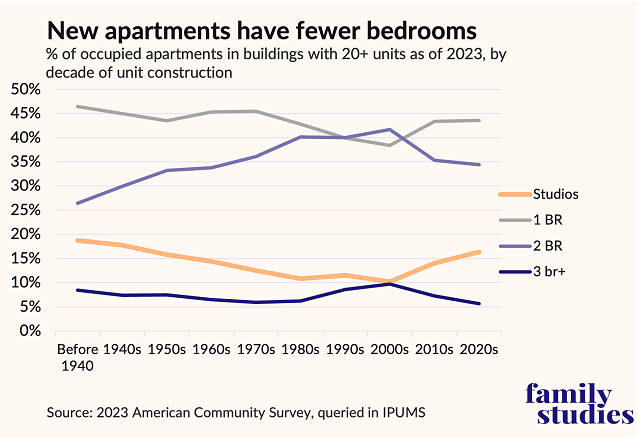
Today, family-friendly apartments with 2+ bedrooms have declined from over 50% of apartments to under 40 percent. It’s no coincidence that the explosion in tiny apartments has occurred alongside fertility decline: couples in cramped apartments really do have fewer babies.
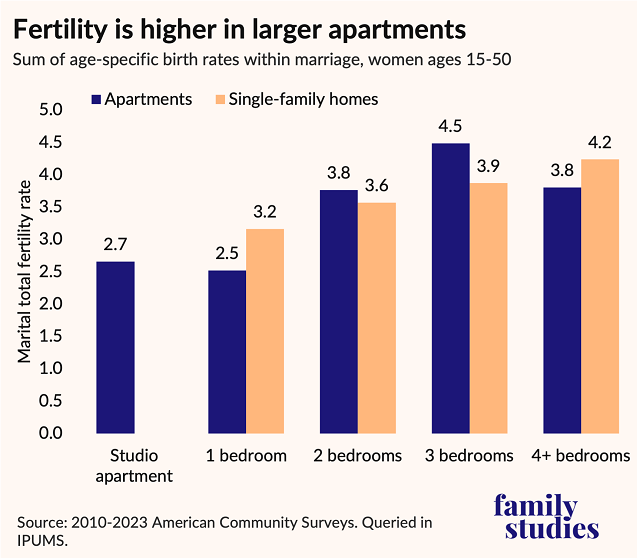
In our survey of about 6,000 reproductive-age Americans, we also tried to untangle why apartment-dwellers have lower fertility. One reason is that a lot of people in apartments report that housing costs are burdening their family choices—the high cost of single-family housing is keeping young people in small apartments.
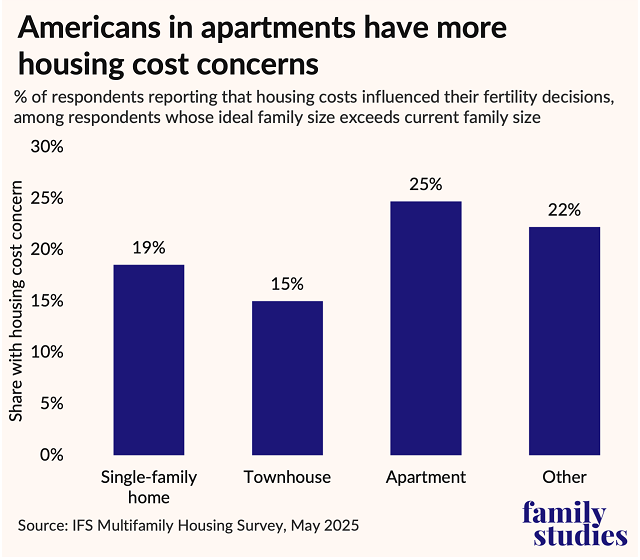
But it’s not just about cost. Americans who don’t live in their ideal house type (mostly young Americans in apartments) and who are childless but want to have kids are by far the likeliest to report that a lack of suitable housing is one reason for why they live where they do.
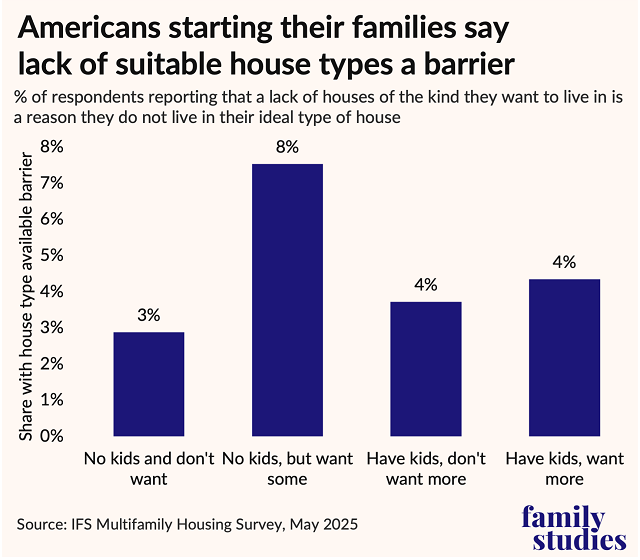
In other words, there are a lot of childless young Americans in apartments who want to have their first kid but aren’t—partly because suitable housing just isn’t available. And what is suitable, family-friendly housing? As we show in our new brief, it’s housing with more bedrooms.
The ideal way to address this problem would be to build more of the starter-home neighborhoods young Americans want. But the shift towards more apartment-construction is a long run change that probably isn’t going to disappear overnight. Thus, in the meantime, the least we can do is try to ensure that new apartment developments have more family-friendly units. We lay out some ideas on how that can be done here.
Lyman Stone is Senior Fellow and Director of the Pronatalism Initiative at the Institute for Family Studies.
*Photo credit: Shutterstock














